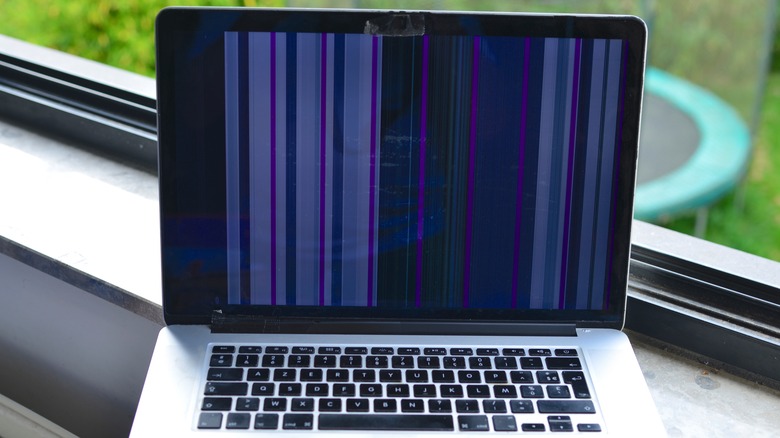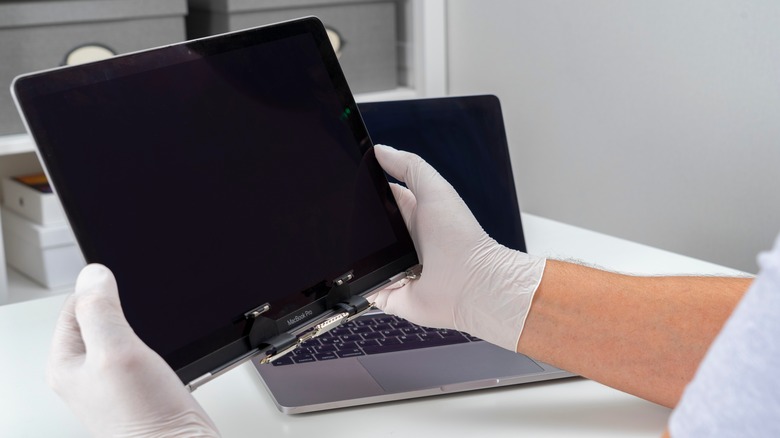How To Turn Your Old Broken MacBook Into A Slabtop
Recently, a growing trend in China has made its way to the West. MacBook users are turning their laptops into a 'slabtop.' This modified device ignores the laptop's built-in screen in favor of an external monitor. So why do it?
A slabtop effectively functions as a desktop with all the peripherals, such as a trackpad and keyboard, built in. For the minimalists out there, this is a dream come true. Another reason people are building slabtops is to salvage their broken MacBooks. If you have a MacBook with a broken screen, you can turn it into a slabtop for a much lower price than replacing the screen. And if you have a fairly recent MacBook with a powerful M1 chip, a slabtop can be just as fast as a desktop.
Some people are so committed to the slabtop lifestyle that they are buying secondhand MacBooks with broken screens online for cheap and modifying them to save some dough. But don't go logging into eBay just yet, as turning your MacBook into a flat desktop is not the easiest thing in the world.
The process is straightforward, but it won't be for everyone
To turn your MacBook into a slabtop, you must remove the screen. The issue is that you may not be willing to open your MacBook up to fiddle with its insides, risking further damage. If you are in that camp, you can always take it to your local laptop repair shop and have a professional remove the screen. Although it won't be free, it will undoubtedly be less expensive than replacing the screen.
After you pop that screen off, you can plug your MacBook directly into an external monitor, and the device will function the same as it did with the internal display. If you are a minimalist, you'll probably want to connect to the external screen using a powered USB-C cable to have just one cable dangling out of your computer. Those who aren't afraid to clutter up their desk a little bit can plug in a USB hub to make up for the MacBook's limited ports.
There are a few quirks to a slabtop that should be noted. For example, because the sensor won't detect the closed monitor lid, the slabtop may boot up thinking the internal display is still up and running. This slows down the log-in procedure by a few seconds as the device adjusts. That said, waiting a few seconds is better than paying hundreds of dollars for a screen replacement.

